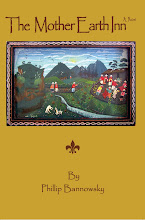Douglas Morea has just published a breakthrough collection
of poems, Letters to You, with Broken
Turtle Books. Written with an “epistolary pretence,” these poems address the
memories, persons, events, places, and moral preoccupations of Morea’s life.
Breakthroughs are thought to be the province of youth, yet Morea has developed
a new language of poetry, more intimate, but no less daring than the verses of
Keats.
Douglas Morea was publishing poems in The New Yorker in the early 1970s when he was about the same age as
Keats in his glory. Douglas and his then wife Kass left the literary limelight
of New York for the moated enclave of Delaware in the late ‘70s. Douglas
remained productive, releasing short run chapbooks, essays, and cartoons, and
reading at local venues his longer poems, typed on sheets pasted end to end
somewhat like a scroll. I have long proclaimed Douglas to be Delaware’s finest
poet. Letters to You demonstrates, I
believe, that Douglas Morea’s craft and power have grown since his youthful
successes at The New Yorker.
I had been speaking recently with Douglas about John Keats,
who had been so clever and daring, before he died at 25. Douglas, who has a
wide knowledge of science, said it was even common for folks in the sciences to
peak in their youth. I thought of Einstein, who published his Special Theory of
Relativity when he was 26. So what’s
new with Morea since his day in The New
Yorker sun?
Morea’s growth can be measured by comparing “Having Children,”
a brilliant poem he published in the September 16, 1974 New Yorker, with “Hey Canada Geese, How Come Your Babies Almost
Never Get Run Over Anymore?” from Letters
to You.
In his earlier treatment of procreation amid life’s
vicissitudes, Morea’s dominant metaphor is a scene where “brazen summer/wilts
weeds in a city lot.” Describing the struggle of the weeds to thrive amid “gobs
of tar, old tires,” Morea demonstrates youthful pyrotechnics of imagery, sound
figures, and word play:
These growths are pale pith,
sweet and rank, piped in green fibre;
leaves ladder up them:
footholds gouged in the face of sheer
cliff-air.
Sun pounds down on raised fingers
branching
upon the ledge of bloom;
With such precocious
flair, he was good then, but he’s
even better now. In “Canada Geese,” he mutes the fireworks so we can hear a
more intimate voice, one that tells a subtler tale. Noting how subsequent
generations of geese have learned to protect their offspring from traffic,
Morea, with defter music, work-play, and apostrophe, laments
While most of you arise by wise
adults, seasoned on many seasons,
we get raised by raw near-children.
Humans mostly have but one shot
parenting, then
we're shot.
Like you, we learn to keep them off
the road, but often
not in time. Like yours, our wisdom
grows, but ours grows only old,
and with us dies.
You can read the entirety of both poems at Letters to You
Samples.
Some suppose that after his Theory of Relativity, Einstein’s
production was restricted to thinking deep thoughts at Princeton until he died
in 1955, although he published over 300 scientific papers.
Since his last piece for The
New Yorker, Morea has published six other collections of poetry including How About Meet Me Where Nothing Has Ever
Happened in the History of the World and Not Sterilized but You Won’t Die From It/The Even Newer Testament. An
essayist and cartoonist, Morea wrote The
Andrist: a Sexual Political Essay and Book
of Crosses: A Thematic Cartoon Collection. His works have appeared in
numerous literary magazines including Dreamstreets
and The Mickle Street Review, which
awarded him the Doris Kellogg Neale prize in 1984.
Like Keats, Morea achieved youthful fame. Like Einstein, his
later works are famous to but a few. May the publication of Letters to You provide a second and
wider fame for Delaware’s finest poet.
Morea was born in 1945 in Queens, New York City, and grew up
primarily there, marrying and moving to Delaware in his late 20s, where he with
their mother Kass raised two daughters to successful adulthood. He remains here
now with his second wife, Karen.






Douglas will be featured at Mocha, Music and More, the monthly showcase of music and verse, on Friday, February 15, 2013 from 7 to 9 p.m. at The Central Perk, 42 East Main Street in Newark. The event will include a book signing and musical entertainment by Guitarist Stephan Wolfe and the Scrapple Creek Runners band.
ReplyDeleteNext scheduled is the 2nd Saturday Poets, from 5 p.m. to 7 p.m., March 9, 2013 at the Jackson Inn, 101 N. DuPont Road, in Wilmington.
Douglas is the totem that matters here the most.
ReplyDelete'In “Canada Geese,” he mutes the fireworks so we can hear a more intimate voice, one that tells a subtler tail.' Really? Or were you punning?
ReplyDeleteTail? What Tail? You mean the one that went down the memory hole?
DeleteKeats was 25 when he died, not 26.
ReplyDeleteThank you. I looked at the years, not the months, and now I edited another mistake down the memory hole.
DeletePhillip ,your piece is an excellent review introduction to Douglas Morea's poetry. I have a copy of his "The starling in the grass has" and I'd been looking for more of his poetry. Douglas Morea reminds me of a few of my other favorite Newark ,Delaware poets , W.D. Snodgrass , Gibbons Ruark ,and local E. Main Street minstrel-philosopher David Robertson. The use of place and local street and nature imagery in Douglas Morea's poems give a fantastic poetic flash to the reader and draws him in to the story.
ReplyDeleteGreat and I have a nifty provide: Where To Start Home Renovation home renovation quotation
ReplyDelete